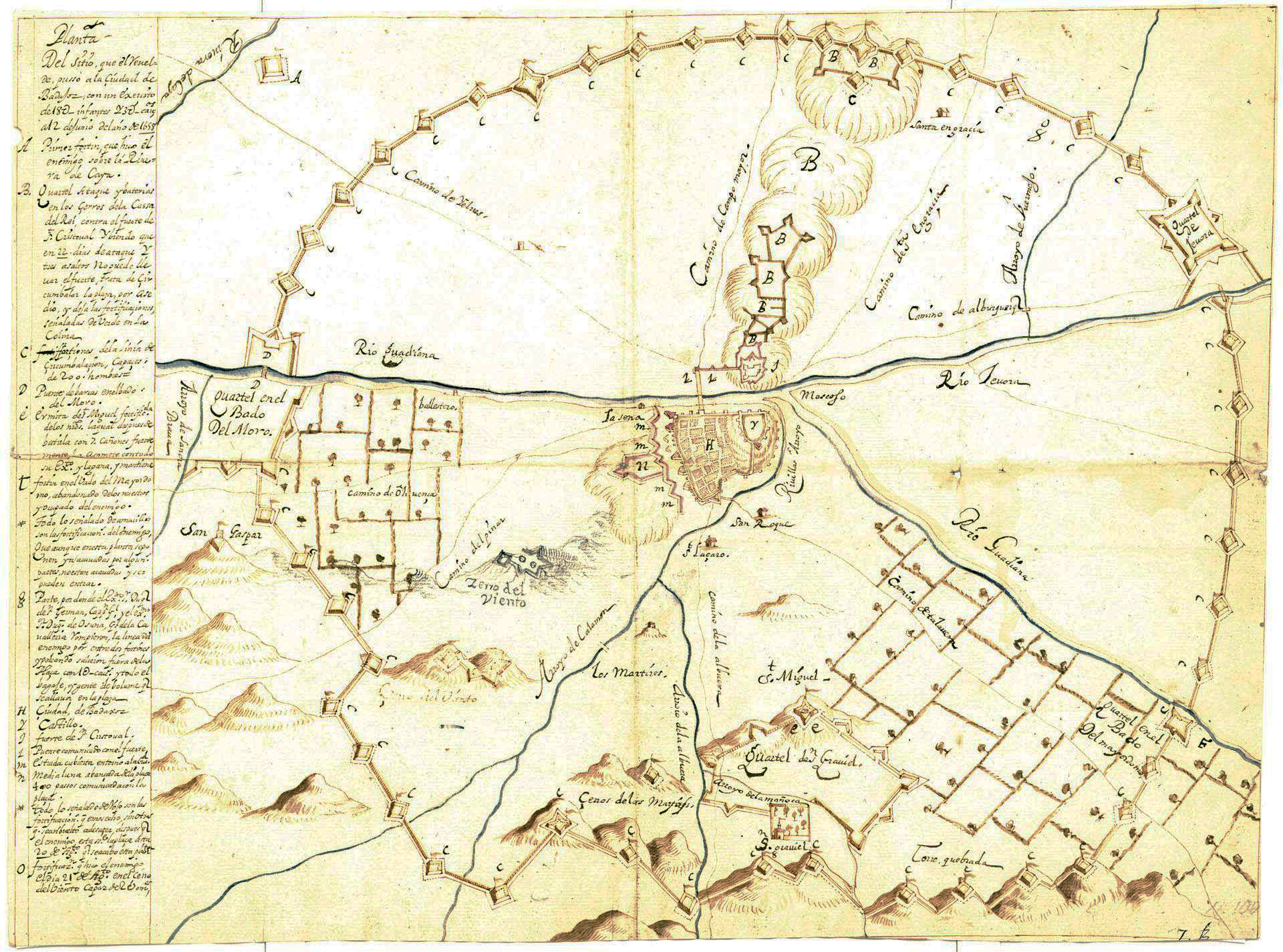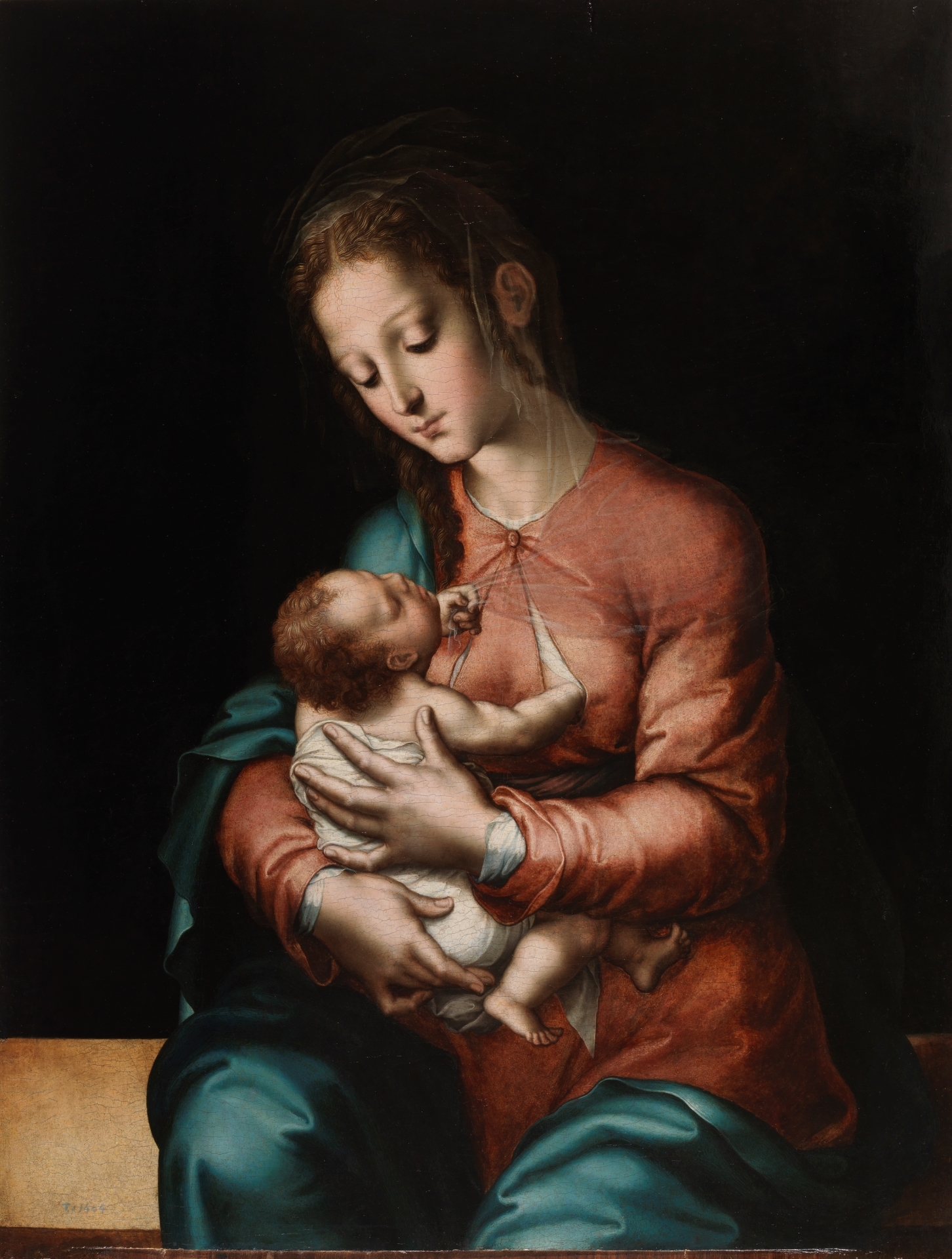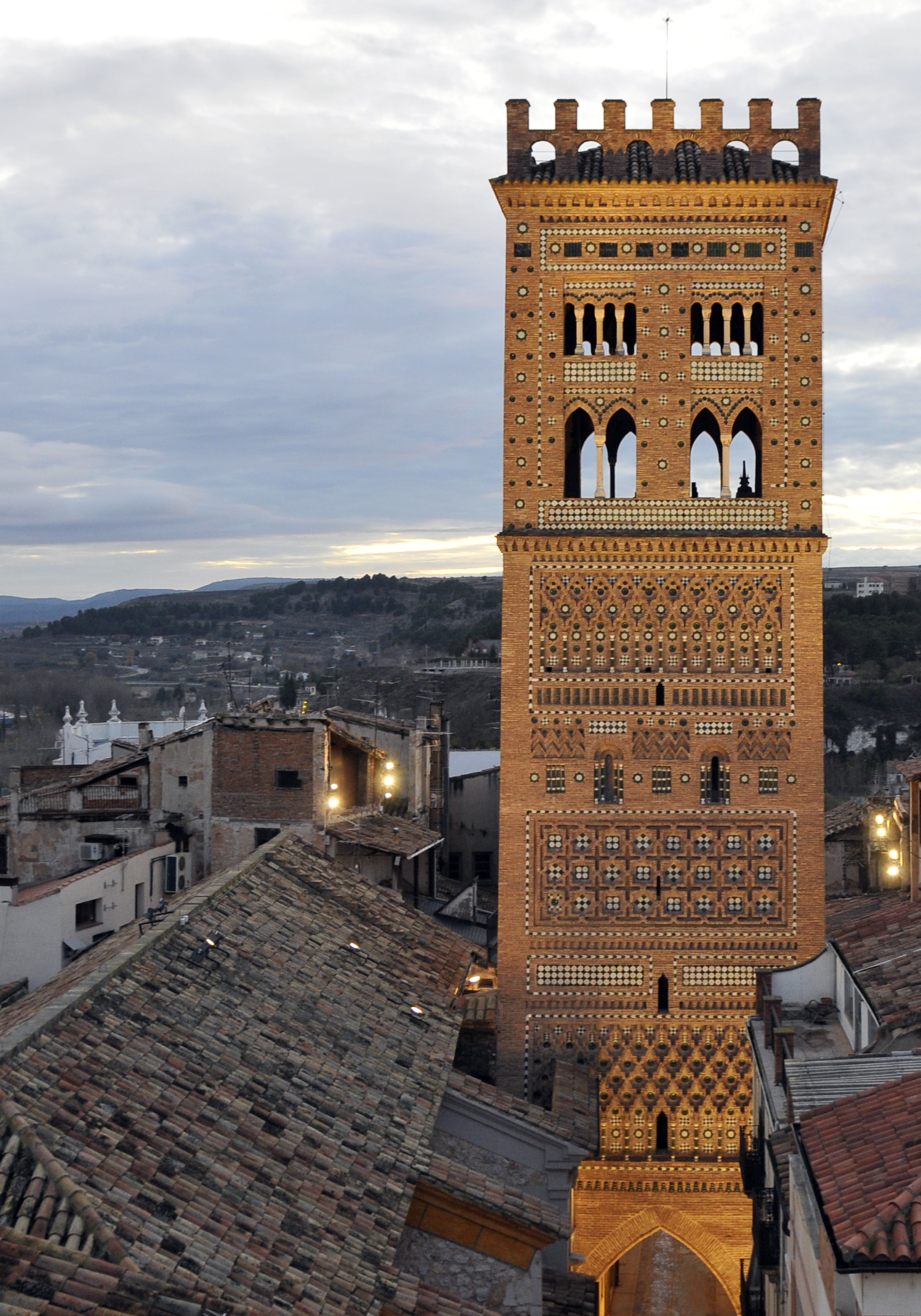|
Alcazaba Of Badajoz
The Alcazaba of Badajoz is an ancient Moors, Moorish citadel in Badajoz, Extremadura, western Spain. The alcazaba as it now appears was built by the Almohads in the 12th century, although it probably existed from the 9th century, when Badajoz was founded. In the 11th and 12th centuries it was the residence of the rulers of the taifa of Badajoz. It was declared a national monument of Spain in 1931. History Badajoz was founded by Ibn Marwan, Abd-al Rahman Ibn Marwan in 875. After having led several rebellions, he was expelled from Mérida, Spain, Mérida but was given the chance to found a new city. He built a large citadel on a hill commanding the new city, thereby granting Badajoz a strategic role in controlling the passage from Portugal to central Iberia. The current line of walls date mostly from the Almohad age, although there are traces of earlier work from 913 and 1030; in 1169 the Almohad caliph Abu Yaqub Yusuf rebuilt the fortress, giving it its current appearance. The l ... [...More Info...] [...Related Items...] OR: [Wikipedia] [Google] [Baidu] |
Badajoz
Badajoz is the capital of the Province of Badajoz in the autonomous communities of Spain, autonomous community of Extremadura, Spain. It is situated close to the Portugal, Portuguese Portugal–Spain border, border, on the left bank of the river Guadiana. The population in 2011 was 151,565. Badajoz was conquered by the Moors in the 8th century and re-founded as Baṭalyaws, and later in the 11th century the city became the seat of a separate Moorish kingdom, the Taifa of Badajoz. After the Reconquista, the area was disputed between Spain and Portugal for several centuries with alternating control resulting in several wars including the War of the Spanish Succession, Spanish War of Succession (1705), the Peninsular War (1808–1811), the Siege of Badajoz (1812), Storming of Badajoz (1812), and the Spanish Civil War (1936). Spanish history is largely reflected in the town. Badajoz is the Episcopal see, see of the Roman Catholic Archdiocese of Mérida-Badajoz. Prior to the merger of ... [...More Info...] [...Related Items...] OR: [Wikipedia] [Google] [Baidu] |
Badajoz Cathedral
The Metropolitan Cathedral of Saint John the Baptist () is a Catholic cathedral in Badajoz, Extremadura, western Spain. Since 1994, together with the Co-cathedral of Saint Mary Major of Mérida, it is the seat of the Archdiocese of Mérida-Badajoz. History After the reconquest of Badajoz in 1230 by King Alfonso IX of León, the new bishop Pedro Pérez initially adapted the former mosque in the Badajoz Alcazaba (citadel) as a cathedral. A new cathedral was not begun until the mid-13th century. The site chosen was that of a pre-existing Visigothic and Mozarabic church in the Campo de San Juan, situated outside the citadel. In 1270, though the construction was not finished, the new cathedral was consecrated and dedicated to St. John the Baptist. The various works on the building lasted until the 15th century, and were followed by some modifications and renovations in the 16th-17th centuries. The church was declared a national historical monument in 1931. On July 28, 1994, Pope ... [...More Info...] [...Related Items...] OR: [Wikipedia] [Google] [Baidu] |
Buildings And Structures In Extremadura
A building or edifice is an enclosed structure with a roof, walls and windows, usually standing permanently in one place, such as a house or factory. Buildings come in a variety of sizes, shapes, and functions, and have been adapted throughout history for numerous factors, from building materials available, to weather conditions, land prices, ground conditions, specific uses, prestige, and aesthetic reasons. To better understand the concept, see ''Nonbuilding structure'' for contrast. Buildings serve several societal needs – occupancy, primarily as shelter from weather, security, living space, privacy, to store belongings, and to comfortably live and work. A building as a shelter represents a physical separation of the human habitat (a place of comfort and safety) from the ''outside'' (a place that may be harsh and harmful at times). buildings have been objects or canvasses of much artistic expression. In recent years, interest in sustainable planning and building prac ... [...More Info...] [...Related Items...] OR: [Wikipedia] [Google] [Baidu] |
Buildings And Structures Completed In The 12th Century
A building or edifice is an enclosed Structure#Load-bearing, structure with a roof, walls and window, windows, usually standing permanently in one place, such as a house or factory. Buildings come in a variety of sizes, shapes, and functions, and have been adapted throughout history for numerous factors, from building materials available, to weather conditions, land prices, ground conditions, specific uses, monument, prestige, and aesthetic reasons. To better understand the concept, see ''Nonbuilding structure'' for contrast. Buildings serve several societal needs – occupancy, primarily as shelter from weather, security, living space, privacy, to store belongings, and to comfortably live and work. A building as a shelter represents a physical separation of the :Human habitats, human habitat (a place of comfort and safety) from the ''outside'' (a place that may be harsh and harmful at times). buildings have been objects or canvasses of much architecture, artistic expression. ... [...More Info...] [...Related Items...] OR: [Wikipedia] [Google] [Baidu] |
Badajoz Bastioned Enclosure
The bastioned system of the Spanish city of Badajoz consists of a Military science, military fortification formed by a set of defensive walls, city gates, bridges, forts, towers, bastions, hornworks, moats, tunnels, and ravelins, among other defensive elements. It was built during the 17th and 18th centuries, following the defensive construction theories popularized by the French military engineer Sébastien Le Prestre de Vauban, Marquis de Vauban, as an extension of a previous defensive enclosure that protected this Portugal–Spain border city. From its founding by Ibn Marwan al-Jilliqi, Ibn Marwan—over an earlier Visigothic settlement, as Badajoz has been inhabited since prehistoric times—the city maintained a stronghold character up to the 20th century. Its strategic location at the crossroads of two major routes: one from Castile (historical region), Castile to Andalusia, and the other to Lisbon, along with its status as a border city with Portugal, has led to both adva ... [...More Info...] [...Related Items...] OR: [Wikipedia] [Google] [Baidu] |
Taifa Of Badajoz
The Taifa of Badajoz (from ) was a medieval Islamic Moorish kingdom located in what is now parts of Portugal and Spain. It was centred on the city of Badajoz which exists today as the first city of Extremadura, in Spain. - '''' History The taifa of Badajoz rose, like the other kingdoms of the , after the fragmentation of |
Badajoz Puerta Del Alpéndiz
Badajoz is the capital of the Province of Badajoz in the autonomous communities of Spain, autonomous community of Extremadura, Spain. It is situated close to the Portugal, Portuguese Portugal–Spain border, border, on the left bank of the river Guadiana. The population in 2011 was 151,565. Badajoz was conquered by the Moors in the 8th century and re-founded as Baṭalyaws, and later in the 11th century the city became the seat of a separate Moorish kingdom, the Taifa of Badajoz. After the Reconquista, the area was disputed between Spain and Portugal for several centuries with alternating control resulting in several wars including the War of the Spanish Succession, Spanish War of Succession (1705), the Peninsular War (1808–1811), the Siege of Badajoz (1812), Storming of Badajoz (1812), and the Spanish Civil War (1936). Spanish history is largely reflected in the town. Badajoz is the Episcopal see, see of the Roman Catholic Archdiocese of Mérida-Badajoz. Prior to the merger of ... [...More Info...] [...Related Items...] OR: [Wikipedia] [Google] [Baidu] |
Mudéjar
Mudéjar were Muslims who remained in Iberia in the late medieval period following the Christian reconquest. It is also a term for Mudéjar art, which was greatly influenced by Islamic art, but produced typically by Christian craftsmen for Christian patrons. ''Mudéjar'' was used in contrast to both Muslims in Muslim-ruled areas (for example, Muslims of Granada before 1492) and Moriscos, who were often forcibly converted and may or may not have continued to secretly practice Islam. The corresponding term for Christians living under Muslim rule is Mozarabs. Starting from the eleventh century, when larger regions previously under Muslim control fell to Christian kingdoms, treaties were established with the remaining Muslim population which defined their status as Mudejar. Their status, modelled after the dhimmi, established a parallel society with its own religious, legal, administrative and fiscal autonomy and institutions, while being subject to their Christian kings and l ... [...More Info...] [...Related Items...] OR: [Wikipedia] [Google] [Baidu] |
Renaissance
The Renaissance ( , ) is a Periodization, period of history and a European cultural movement covering the 15th and 16th centuries. It marked the transition from the Middle Ages to modernity and was characterized by an effort to revive and surpass the ideas and achievements of classical antiquity. Associated with great social change in most fields and disciplines, including Renaissance art, art, Renaissance architecture, architecture, politics, Renaissance literature, literature, Renaissance exploration, exploration and Science in the Renaissance, science, the Renaissance was first centered in the Republic of Florence, then spread to the Italian Renaissance, rest of Italy and later throughout Europe. The term ''rinascita'' ("rebirth") first appeared in ''Lives of the Artists'' () by Giorgio Vasari, while the corresponding French word was adopted into English as the term for this period during the 1830s. The Renaissance's intellectual basis was founded in its version of Renaiss ... [...More Info...] [...Related Items...] OR: [Wikipedia] [Google] [Baidu] |
Order Of Santiago
The Order of Santiago (; ) is a religious and military order founded in the 12th century. It owes its name to the patron saint of Spain, ''Santiago'' ( St. James the Greater). Its initial objective was to protect the pilgrims on the Way of St. James, to defend Christendom and to remove the Muslim Moors from the Iberian Peninsula with the Reconquista. Entrance was not restricted to nobility of Spain exclusively, and some members have been Catholic Europeans from other parts of Europe. The Order's insignia is particularly recognisable and abundant in Western art. With the culmination of the Reconquista and the death of the Grand Master Alonso de Cárdenas, the Catholic Monarchs incorporated the Order into the Spanish Crown, and the Pope Adrian VI forever united the office of Grand Master of Santiago to the Crown in 1523. The First Republic suppressed the Order in 1873, but it was re-established in the Restoration as a nobiliary institute of honorable character. The Orde ... [...More Info...] [...Related Items...] OR: [Wikipedia] [Google] [Baidu] |
Dukes Of Feria
Duke of Feria () is a hereditary title in the Peerage of Spain accompanied by the dignity of Grandee, granted in 1567 by Philip II to Gómez Suárez de Figueroa, 5th Count of Feria. The name makes reference to the town of Feria in Badajoz Badajoz is the capital of the Province of Badajoz in the autonomous communities of Spain, autonomous community of Extremadura, Spain. It is situated close to the Portugal, Portuguese Portugal–Spain border, border, on the left bank of the river .... Counts of Feria Dukes of Feria # Gómez Suárez de Figueroa y Córdoba, 1st Duke of Feria (1567-1571) # Lorenzo Suárez de Figueroa y Dormer, 2nd Duke of Feria (1571-1607) # Gómez Suárez de Figueroa y Mendoza, 3rd Duke of Feria (1607-1634) #Lorenzo Gaspar Suárez de Figueroa y Fernández de Córdoba, 4th Duke of Feria (1634) #Alonso Fernández de Córdoba y Enríquez de Ribera, 5th Duke of Feria (1637-1645) #Luis Ignacio Fernández de Córdoba y Fernández de Córdoba, 6th Duke of Feria ... [...More Info...] [...Related Items...] OR: [Wikipedia] [Google] [Baidu] |
La Torre De Espantaperros (Badajoz, España)
LA most frequently refers to Los Angeles, the second most populous city in the United States of America. La, LA, or L.A. may also refer to: Arts and entertainment Music * La (musical note), or A, the sixth note *"L.A.", a song by Elliott Smith on ''Figure 8'' (album) * ''L.A.'' (EP), by Teddy Thompson *'' L.A. (Light Album)'', a Beach Boys album * "L.A." (Neil Young song), 1973 *The La's, an English rock band * L.A. Reid, a prominent music producer * Yung L.A., a rapper *Lady A, an American country music trio * "L.A." (Amy Macdonald song), 2007 *"La", a song by Australian-Israeli singer-songwriter Old Man River *''La'', a Les Gordon album Other media * l(a, a poem by E. E. Cummings * La (Tarzan), fictional queen of the lost city of Opar (Tarzan) *'' Lá'', later known as Lá Nua, an Irish language newspaper * La7, an Italian television channel *LucasArts, an American video game developer and publisher * Liber Annuus, academic journal Business, organizations, and governmen ... [...More Info...] [...Related Items...] OR: [Wikipedia] [Google] [Baidu] |






